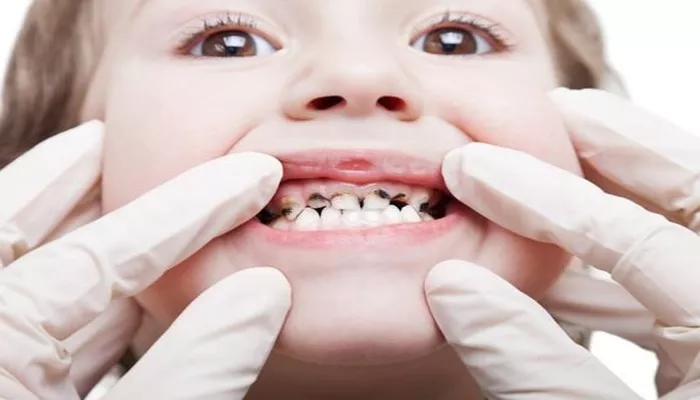Understanding the relationship between tooth decay and bad breath is essential for maintaining good oral health. Tooth decay, or dental caries, is a common dental issue that occurs when the hard tissues of the teeth, such as enamel and dentin, are eroded by acids produced by bacteria in dental plaque. This process can lead to the formation of cavities, tooth sensitivity, and even tooth loss if left untreated. Bad breath, also known as halitosis, is an unpleasant odor emanating from the mouth. It can be caused by various factors, including poor oral hygiene, dietary habits, underlying medical conditions, and, yes, tooth decay. In this comprehensive guide, we will explore the link between tooth decay and bad breath, the underlying mechanisms, and effective strategies for managing both conditions.
The Link Between Tooth Decay and Bad Breath
Tooth decay is a result of the interaction between bacteria in dental plaque, sugars and carbohydrates from food, and saliva.
The bacteria in plaque break down sugars to produce acids, which can erode tooth enamel and dentin over time. When tooth decay progresses, it can create spaces or cavities within the teeth where food particles and bacteria can get trapped.
These trapped particles and bacteria can further break down, leading to the production of volatile sulfur compounds (VSCs) and other odorous gases. These gases are the primary culprits behind bad breath.
How Tooth Decay Contributes to Bad Breath
Food Particle Trapping: Cavities and other areas of tooth decay can provide sanctuaries for food particles and bacteria.
These particles can remain trapped and difficult to remove with regular brushing and flossing.
Bacterial Activity: The bacteria trapped in these areas continue to multiply and feed on any available sugars, producing more acids and odorous gases.
Advanced Decay: In severe cases of tooth decay, the infection can spread to the pulp of the tooth, causing inflammation and even abscesses. These infections can release odorous pus and other fluids, contributing to bad breath.
Dry Mouth: Tooth decay can sometimes be associated with dry mouth, a condition where there is insufficient saliva to wash away food particles and bacteria. Dry mouth can exacerbate bad breath by allowing bacteria to proliferate and produce more odorous gases.
Other Factors That Can Cause Bad Breath
While tooth decay is a significant contributor to bad breath, it is not the only cause. Other factors that can lead to halitosis include:
Poor Oral Hygiene: Inadequate brushing, flossing, and tongue cleaning can allow bacteria to accumulate on the teeth, tongue, and gums, leading to bad breath.
Gum Disease: Gingivitis and periodontitis are inflammations of the gums caused by plaque buildup. These conditions can create pockets where bacteria and food particles can accumulate, causing an unpleasant odor.
Dental Appliances: Dental braces, retainers, and dentures can trap food particles and bacteria, making it difficult to maintain good oral hygiene and leading to bad breath.
Diet: Foods with strong odors, such as onions, garlic, and spices, can contribute to temporary bad breath.
Medical Conditions: Certain medical conditions, such as respiratory infections, diabetes, and liver disease, can also cause bad breath.
Tobacco Use: Smoking and chewing tobacco can stain teeth, irritate gums, and reduce saliva production, all of which can contribute to bad breath.
Managing Bad Breath Caused by Tooth Decay
Addressing tooth decay is crucial for managing bad breath. Here are some effective strategies:
1. Good Oral Hygiene Practices
Brush Regularly: Brush your teeth at least twice a day with fluoride toothpaste, which helps to strengthen tooth enamel and fight cavities.
Floss Daily: Use dental floss to clean the spaces between teeth and under the gum line, where a toothbrush can’t reach.
Clean Your Tongue: Use a tongue scraper or brush to clean the surface of your tongue, where bacteria can accumulate.
Use Antimicrobial Rinse: An antiseptic mouthwash can help reduce the number of bacteria in your mouth and freshen your breath.
2. Regular Dental Check-ups and Cleanings
Professional Cleanings: Regular dental cleanings can remove plaque and tartar buildup that brushing and flossing may miss.
Early Detection and Treatment: Regular check-ups allow dentists to detect tooth decay early and treat it before it progresses, reducing the risk of bad breath.
3. Address Underlying Conditions
Treat Gum Disease: If you have gum disease, your dentist can recommend treatments such as scaling and root planing, or even periodontal surgery, to restore gum health.
Manage Dry Mouth: If dry mouth is a concern, your dentist may recommend artificial saliva products, sipping water throughout the day, or chewing sugar-free gum to stimulate saliva production.
Adjust Diet: Avoid sugary snacks and drinks, and limit foods with strong odors. Incorporate plenty of fruits, vegetables, and lean proteins into your diet.
4. Consider Dental Treatments
Fillings and Crowns: If tooth decay has caused cavities, your dentist may recommend fillings or crowns to restore the structure and function of your teeth.
Root Canal Therapy: In cases of severe decay that has reached the pulp, root canal therapy can save the tooth and prevent the spread of infection.
Extraction: If a tooth is too damaged to save, extraction may be necessary to prevent further decay and infection.
5. Lifestyle Changes
Quit Smoking: Smoking is a major risk factor for tooth decay and gum disease, and it exacerbates bad breath. Seek professional help if you need assistance quitting.
Stay Hydrated: Drink plenty of water to keep your mouth moist and flush away bacteria and food particles.
Conclusion
In conclusion, tooth decay can indeed cause bad breath due to the accumulation of food particles and bacteria in decayed areas, the production of odorous gases, and potential infections. Managing bad breath caused by tooth decay involves a combination of good oral hygiene practices, regular dental check-ups, addressing underlying conditions, considering dental treatments, and making lifestyle changes. By taking these steps, you can improve your oral health and reduce the incidence of bad breath. Remember, good oral health is not just about having a bright smile; it’s about maintaining a healthy mouth that contributes to your overall well-being.
Related topics:

